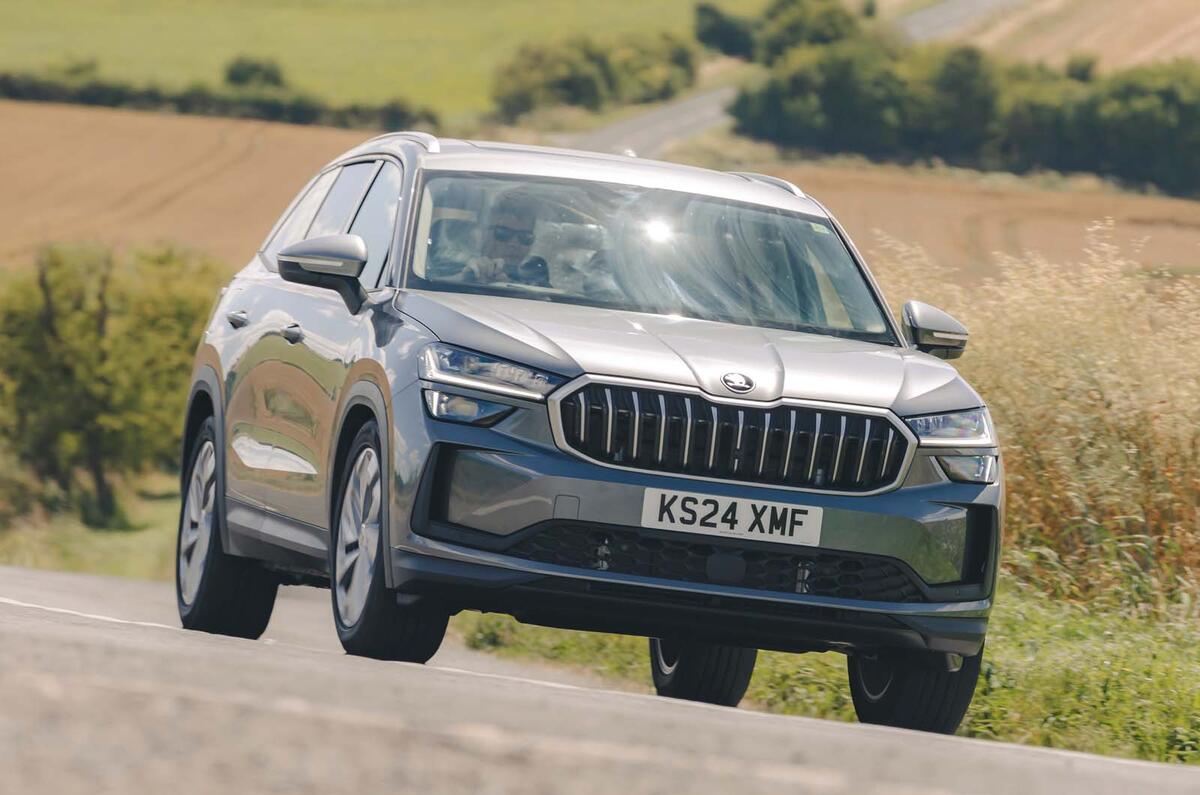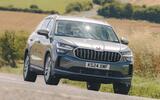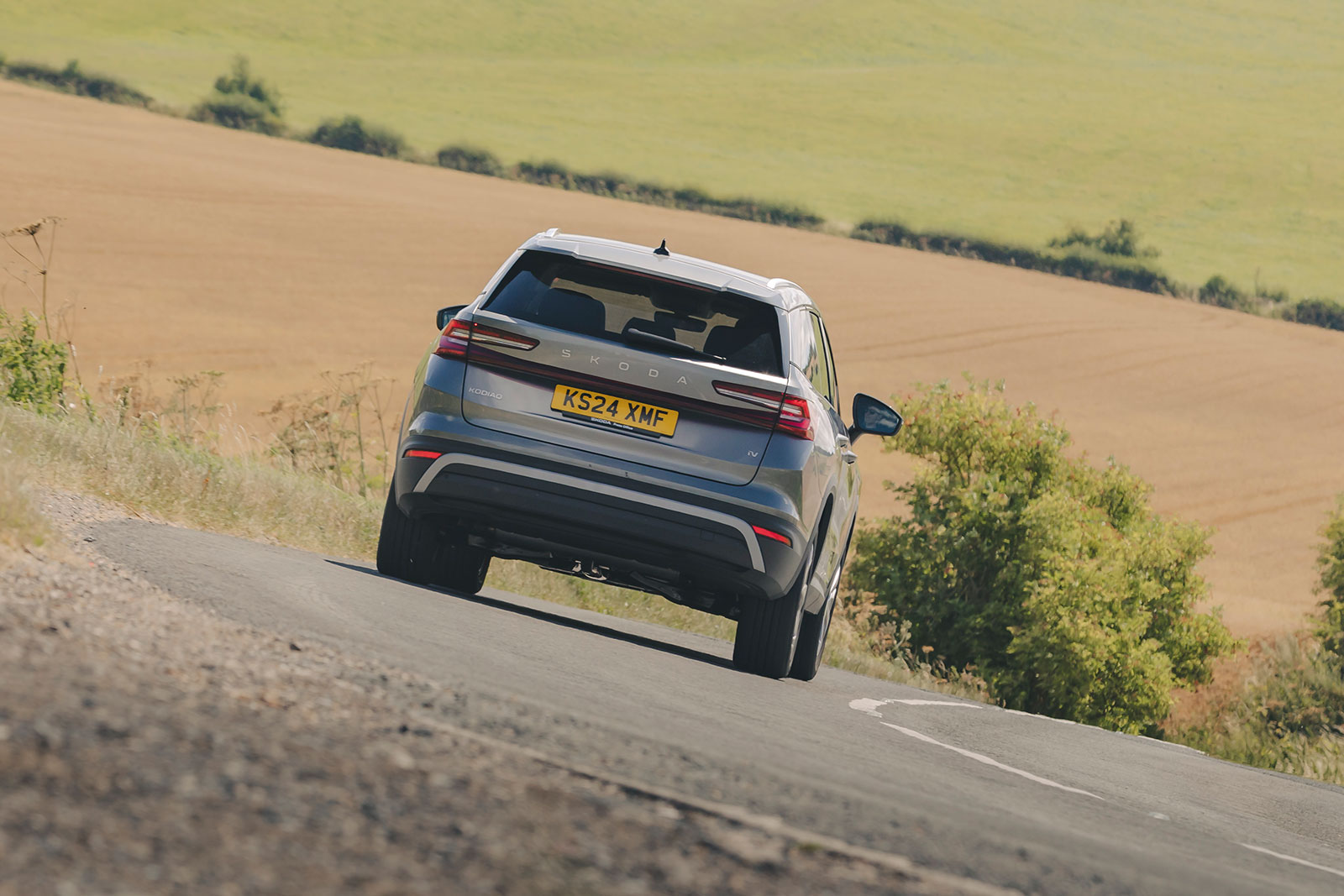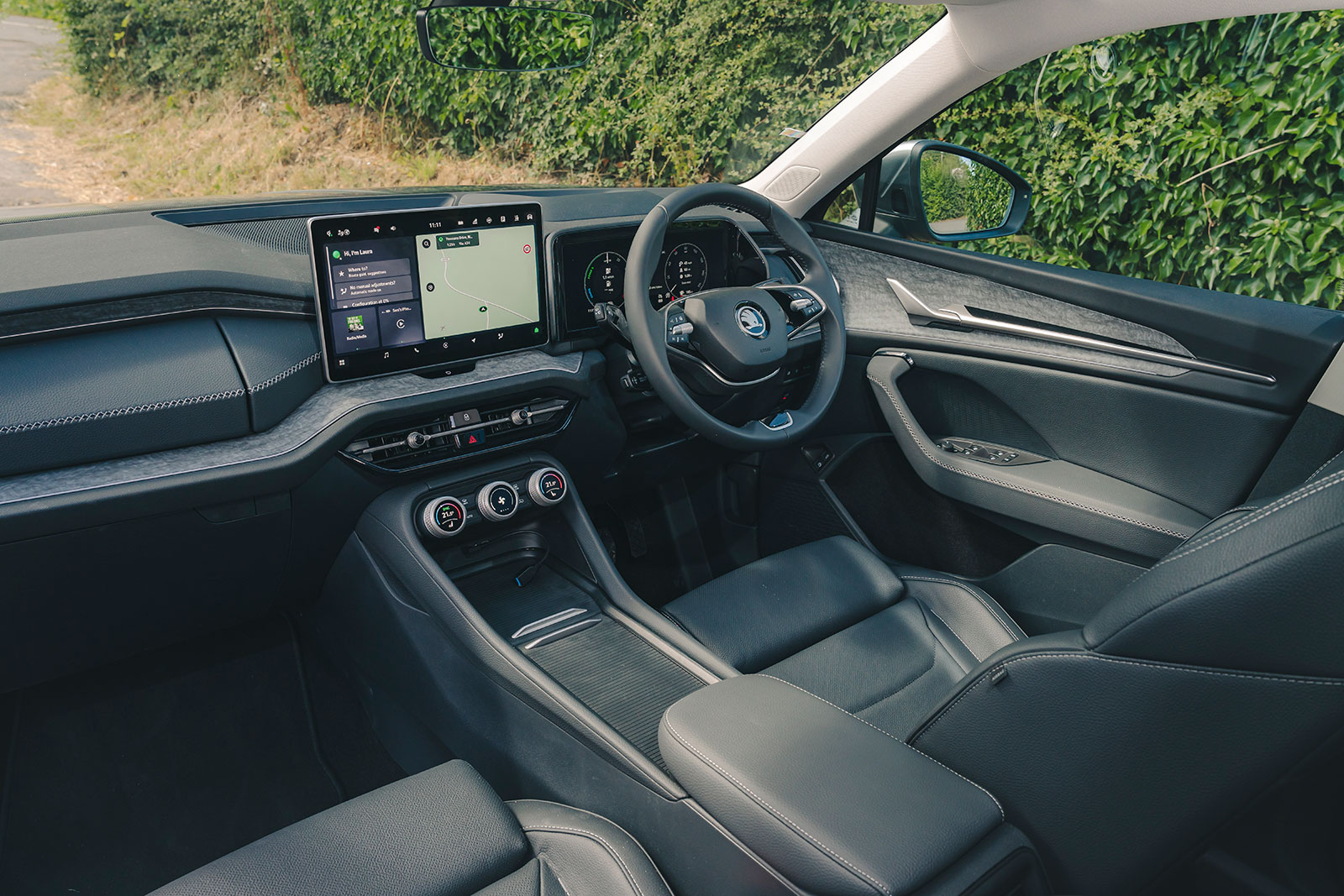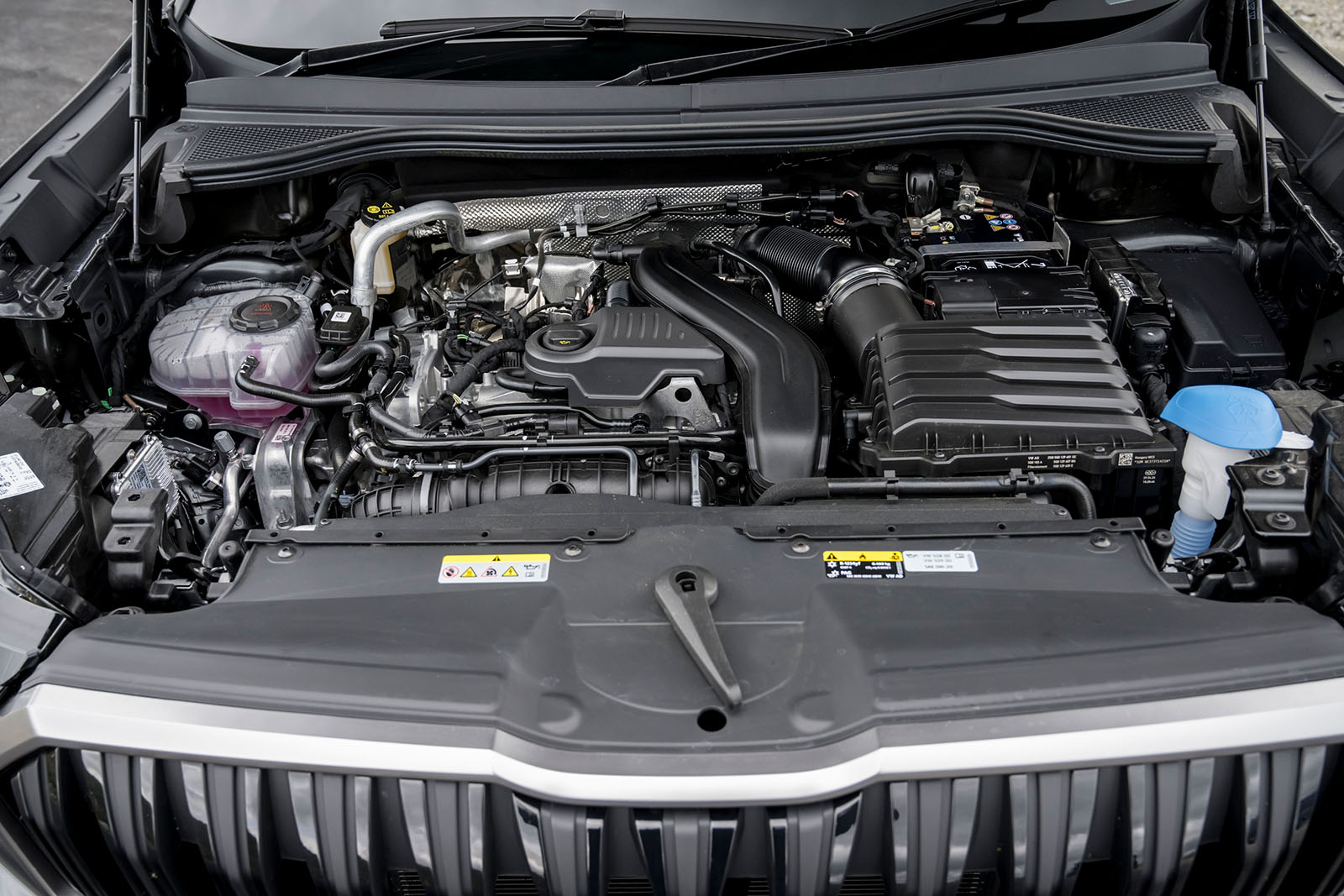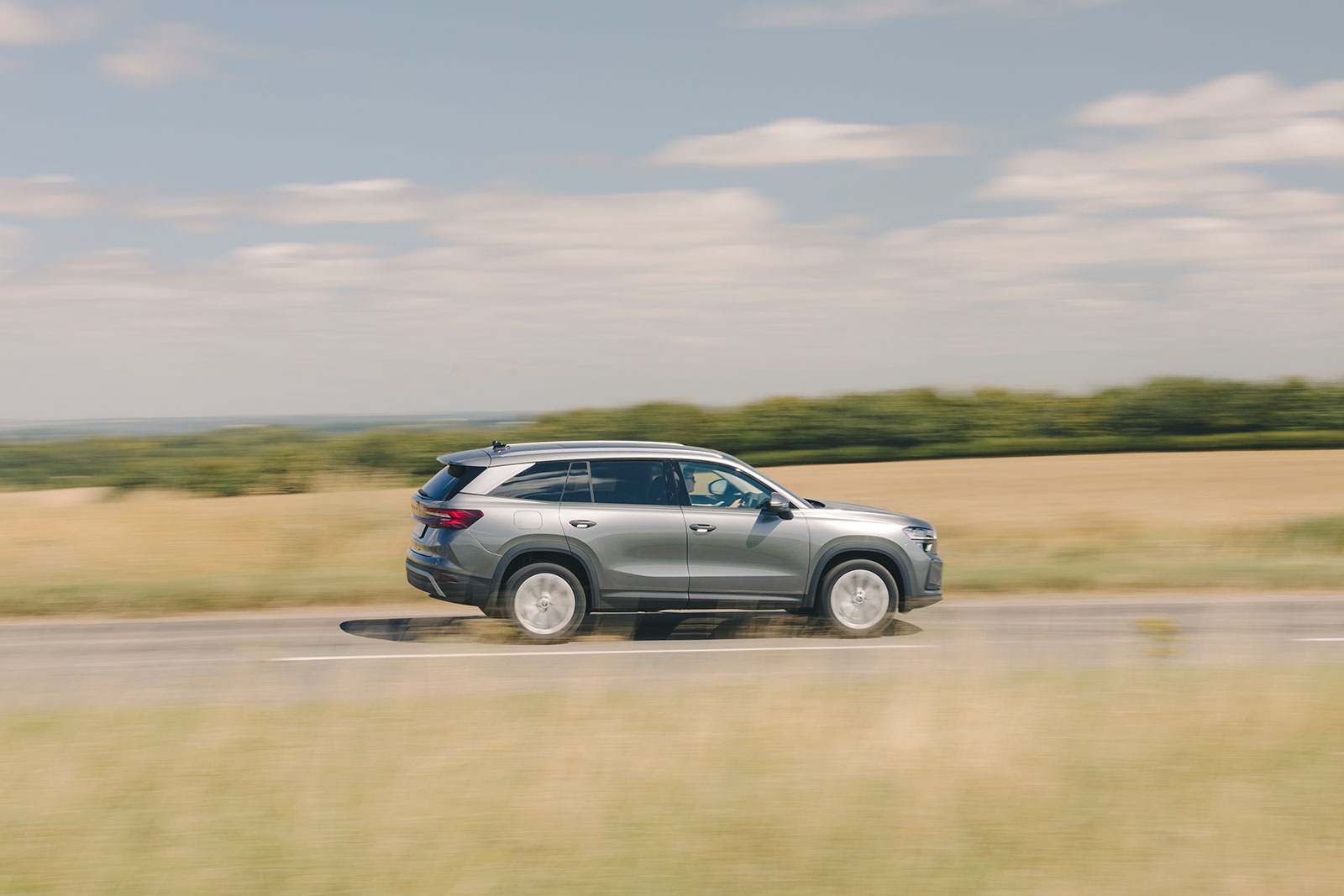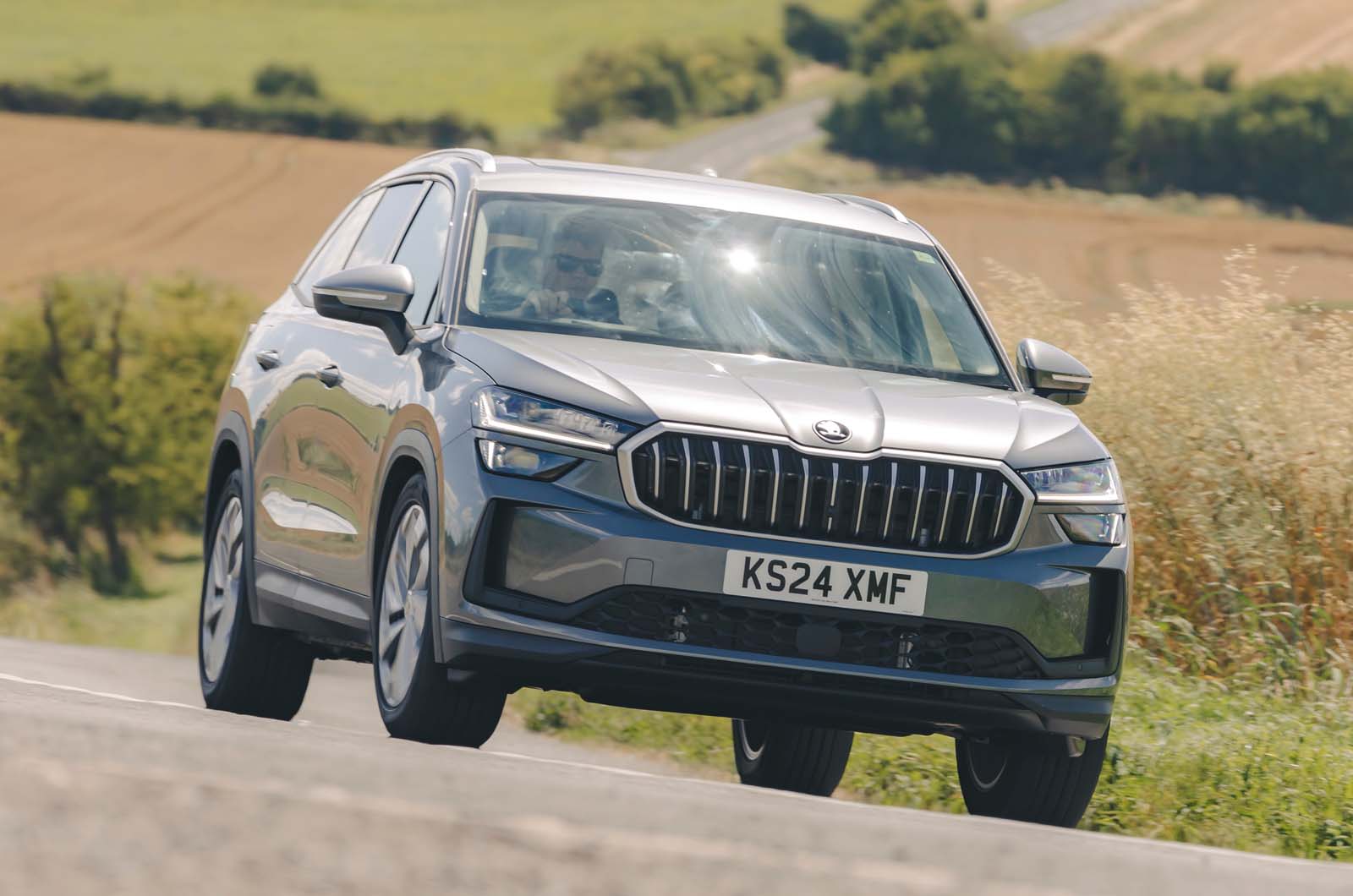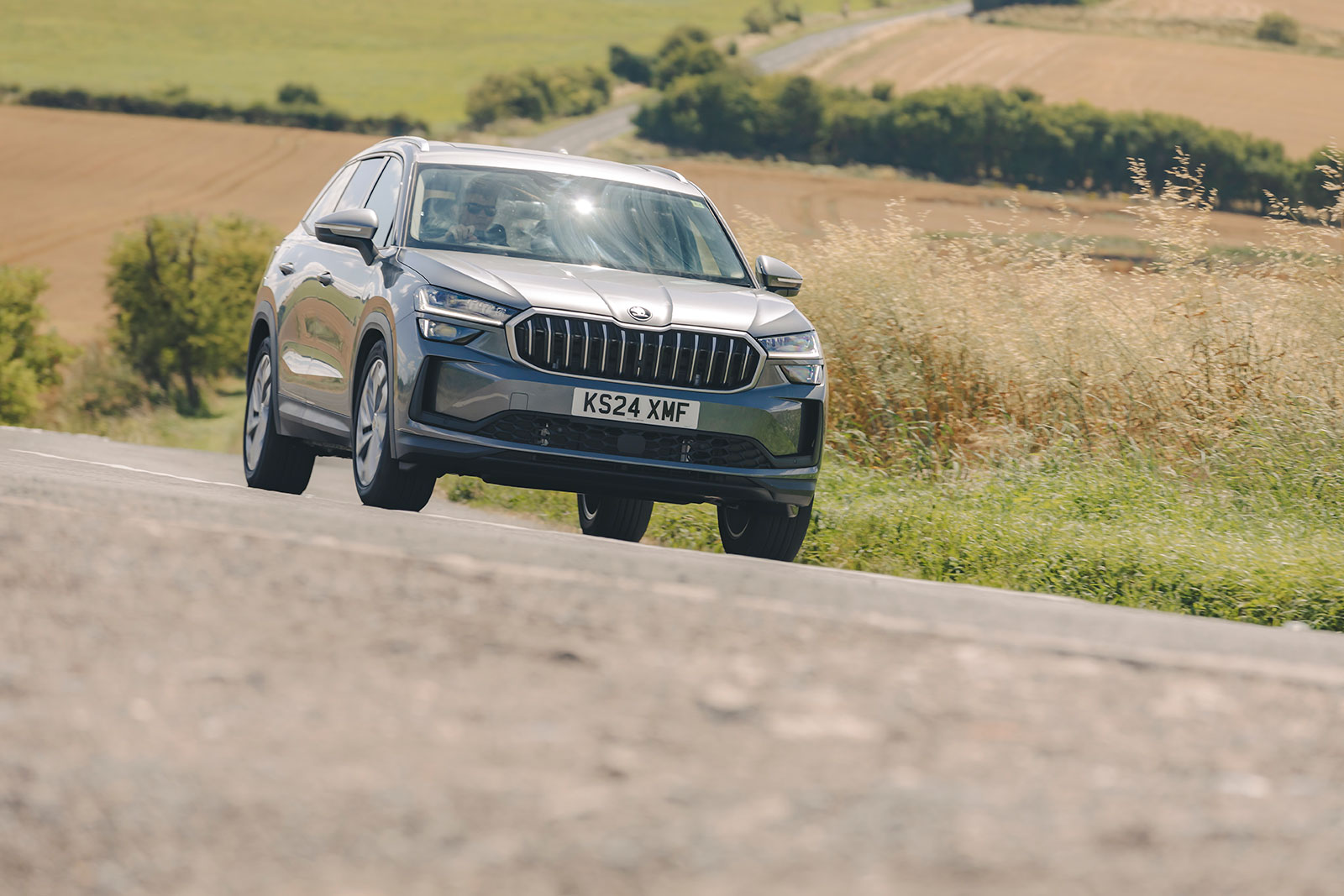A large, seven-seat SUV is all about the interior, you might argue, given that the genre has effectively replaced MPVs. And Skoda seems to have taken that to heart, because inside, the Kodiaq is a very nice place to be.
Practical matters first: the old car was spacious, and an additional 61mm of length makes this one even more palatial. With the rear seat in its standard position, you can stretch out, almost like in a Mercedes-Benz S-Class. The bench itself provides good thigh support and usefully folds in a 40/20/40 split.
The third row (which is standard on most Kodiaqs in the UK) is tighter, of course, but by sliding the second row forwards, you can just about cram in seven adults. None of them will be too happy about it, but it’s better than walking.
A usable amount of boot space remains even with all the seats up, too. The five-seater boasts 910 litres.
Unfortunately, you can't have the Kodiaq PHEV with a seven-seat configuaration, as the large battery fills the space where the third-row seats would normally sit.
Skoda’s engineers did consider one, but they would have had to compromise the battery size and the fuel tank. Indeed, the Kia Sorento PHEV, which does have seven seats, offers less than half the Kodiaq’s EV range.
And even though the battery pack is stowed underneath the boot floor, you still get up to 745 litres of boot space.
The real revolution is in the general design and ambience. As with the Skoda Enyaq electric SUV, you choose a trim and then one of four ‘design selections’ that match all the interior materials. Some work better than others, but the one with the grey faux leather and wool and wood inserts felt a cut above some of the symphonies in plastic being churned out by the ‘premium’ car makers.
The Kodiaq isn't totally free of cheap materials, though. Overall, it feels and looks refined, the panoramic roof adding a light and airy atmosphere to the cabin. Prod certain elemets around the glovebox and doors and it's clear that it isn't as materailly rich as first thought.
The plastic trim that runs across the dashboard is particularly disappointing, as is the material around the glovebox, which feels and sounds like a thin layer of cloth draped over an equally papery sheet of plastic.
The user interface, however, gives you the sense that the engineers put some real thought into how you might want to use a car. On the road. While driving. Figure that. The overall button count has been reduced, sure, but once you’ve set up some shortcuts, the latest generation of Skoda’s multimedia system puts important functions just a single press away. Unlike previous iterations, it also responds instantly.
The ‘Smart Dials’ that made their debut in the Superb help too. There are two dials that control the temperature and heated seats and one to which you can map up to four functions, like zooming the map and changing the fan speed and driving mode. Once you get used to it, it works remarkably well, and without overloading the dashboard with buttons.
Our only gripe with them is that they feel quite cheap and flimsy to use, and their integration with Apple CarPlay looks clumsy and unfinished, with your chosen screen being blanked off and interrupted each time you adjust the HVAC controls and heated seat ferocity.
We encountered some other issues. Some of the electrical systems threw up glitches: the car failed to recognise the key fob when the car was in motion and cut out the engine, and some ADAS functions were temperamental. This particular test car was on an outdated software version and we’ve not noticed the same with other Skodas, but this is still slightly worrying.
Other gripes? Space has been freed up in the centre console by turning the gear lever into a column stalk where the wiper controls once sat. This leaves the left-hand stalk to perform 14 different functions depending on how you push, pull or click it, which is confusing to get used to.





